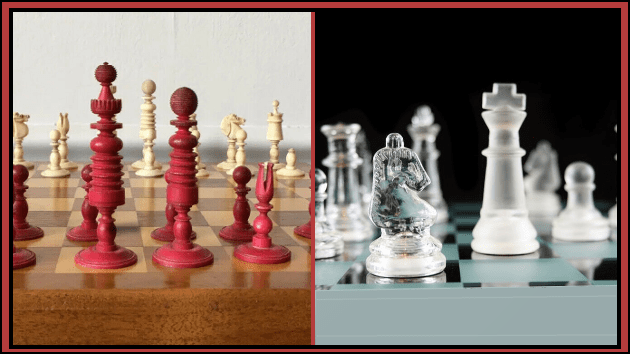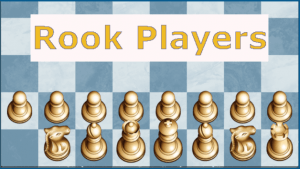
Something Old, Something New
Something Old
Deep into the 19th century chess was still characterized by match play.
The idea of tournaments was slow to catch on. Prior to the London International Tournament of 1851 (the first international tournament), the number of tournaments could have been counted on one hand with fingers left over. London 1851 was a clumsy match-tournament, but a catalyst nonetheless. The decade-plus between the 1851 and the second international tournament of 1862, also at London, saw the number of tournaments having occurred more than triple and five years later (1867), less than half the time as between the first two, there was yet another international tournament- this one in Paris.
Probably due to the expense, the uncertainty, the slow communication and difficulty in travel as well as the exorbitant amount of time expended in those travels, most tournaments tended to be local or provincial and among these local events, the larger metropolitan locales were the most likely venues.
In his Memoirs of the British Chess Association (BCA) from the The Chess Congress of 1862, George Medley gave the following contemporary insight:
Accustomed as we are at the present day to congresses, festivals, and exhibitions, embracing every object connected with art, science, and industry, and to the facility with which they are brought about, some consideration becomes necessary in order to estimate the difficulties attending similar undertakings in the year 1840. At that day steam communication was in its infancy; the penny post had been but recently established; the electric telegraph was hardly known. Now, however, regarding these agencies with respect to the game of Chess, our steamers and railways bring together its votaries from the most distant lands; a match by correspondence is an every-day affair; and the electric wire serves as an additional method of carrying on the mimic war. Without them, such a meeting as the Chess Congress of 1862 could not have taken place.
Even fairly local events were apparently hard to organize until at least the second half of that century.
The BCA was an innovative organization and a propellant in the development of tournaments. Besides their regularly convened congresses which at times became elaborate affairs, they introduced The Grand Challenge Cup. Physically it was a silver cup valued as £50, designed to be given to the winner of the special biennial tournament of the BCA Congress who would be designated the British Champion. The cup would remain the property of the BCA until an individual won it two years when it would become his property. The Cup was established in 1866 and won by Cecil de Vere that year. Joseph Blackburne claimed it in 1869. John Wisker won the Cup in 1870 and again in 1872, claiming it as his own. The Challenge Cup was never reinstated after that.
Something New
The 1868-9 BCA Congress was particularly attention-getting. As with some previous congresses, it contained a variety of events but unlike any before it featured some quite novel ones.
Let's first look at the meeting in toto.
The main tournament — for the Grand Challenge Cup — began on Nov. 24, 1868 simultaneously at the St. George's Club, the Westminster Club and the Divan on the Strand.
Eleven players, each paying an entrance fee of £1 1s., participated.
The time control was set at 20 moves in 2 hours, as measured by a sandglass (introduced in the Kolisch-Anderssen match, Aug. 1861 and at the Bristol tournament, Sept. 1861). Strangely, the combatants in each game were permitted to agree to restrict their time even further. The contestants were expressly required to play 5 games per week but this never happened and instead of finishing up mid-December of 1868, the main tournament stretched onto March 10, 1869.
There has been, however, one drawback, and one which has in some way detracted from the eclat of the meeting—the too general non-observance of one of the regulations, by which all competitors were alike bound to play five games a week. [Chess Players' Quarterly Chronicle, June 1869]
Joseph Blackburne and Cecil De Vere tied for first place after which Blackburne won the playoff game, winning both the cup and the title.
While this tournament was getting under way at the various chess clubs, the BCA sponsored events at the St. James's Hall, at that time only about 10 years old, for the entire week—from Monday, Nov. 30 until Saturday, Dec. 5.
Among these events was a 17 board simultaneous exhibition give by John Jacob Löwenthal. He won 15, lost 1 and drew 1.
Joseph Blackburne and William Steinitz gave an unusual blindfold exhibition on Dec. 4. They played blindfolded against each other as well as against the same 5 opponents (each player used two boards, one marked "Steinitz," one marked "Blackburne"). The game between Steinitz and Blackburne was drawn by mutual agreement. Against their sighted adversaries (Charles Bird Locock, Thomas Smith, John Baker, Richard Ormond and Charles Puller), Steinitz won 1, lost 2 and drew 2, while Blackburne won 3, lost 1 and drew 1, giving Blackburne the victory.
A telegraph match between 8 members of the Westminster club and 8 members of the Bristol Athenaeum Club was also held at St. James's Hall. The Westminster Club won 4 and dew 1. The remaining 3 were abandonned due the the time.
A series of consultation games took place starting on Nov. 30:
Blackburne & Steinitz won against De Vere & MacDonnell
Boden & Steinitz won against De Vere & MacDonell
Bird & Duffy won against De Vere & MacDonnel
Bird & Duffy won against Blackburne & Ormond
Blackburne, Stewart & Wisker won against Duffy, Hewitt & MacDonnell
There was a rather large handicap tournament. The time and venue was never specified, but the event consisted of 24 participants, each of whom paid a 10s. 6d. entrance fee and vied for 4 prizes totaling £40. 1st place, Steinitz; 2nd place, Wisker; 3rd place, Blackburne and 4th place, V. Green.
Additionally another minor tournament was sponsored by The Glowworm Programme and Evening Newspaper.
The Glowworm started in 1865 as a regular evening paper with a twist. On its frontispiece it presented "the programme of a theatre or music hall and issues, as far as this feature is concerned, a separate edition for each of the most conspicuous places of amusement. Thus a person who is attending a performance can purchase of the attendants a copy of the 'Glowworm,' containing the usual evening news, with a programme of the particular place of amusement..." [Annual Register, 1866]
Ironically, The Glowworm went out of business in March of 1869 right after the final game of the Grand Challenge Cup was completed. For this simple knockout tournament with 20 competitors, The Glowworm put up £20 for first prize (won by MacDonnel) and £5 for second prize (won by Wisker).
In spite of the novelty of a couple of these aforementioned events, this final one is the Something New.
The Mongredien Prize
Long before Chess 960 / Fischerandom, there had been attempts to render opening theory useless by changing the back-rank piece set-up. This was referred to as Displacement Chess. While such games seem to have been played as early as the 18th century, the very first instance of using Displacement as a tournament format occurred in this 1868 BCA Congress.
The concept was proposed by Augustus Mongredien, who would also subsidize the tournament by donating a £21 prize to the winner, and accepted by the committee. Mongredien also submitted three different modes of displacements for the consideration of a sub-committee consisting of John Löwenthal, George Medley and Henry Waite. They approved the following displacement:

19 gentlemen, each paying a fee of 10s. 6d., entered the Mongredien Displacement Tournament.
Mr. Mongredien gives a Prize of £21 for the winner in a series of games in which a slight displacement of the pieces will render inoperative any advantage derivable from a superior knowledge of openings. Mr. Mongredien wishes to afford an opportunity to those players who, whilst possessed of considerable powers of combination, have not sufficient leisure to study and learn by rote the intricacies of modern analysis as applied to the openings, and who are thus placed at disadvantage from a circumstance in which memory bears a large, and skill only a small part. [The Transactions of the British Chess Association for the Years 1868 and 1869]
The rules stipulated: "Ten minutes allowed to the players for consideration before commencing the game. One game, exclusive of draws, to be played between each pair. Average time allowed over each move, four minutes."

As can be seen Rev. George Alcock MaDonnell won the tournament and the prize.
Augustus Mongredien was born in London to a French father. He witnessed the famous Labourdonnais-M'Donnell matches and joined the London Chess Club in 1835. In 1839 he was elected president, a position he continuously held until it dissolved in 1870. He's well known for having played an even match with Paul Morphy for which he traveled to France in February 1859. Although he lost the 8-game match, losing 7 games and only drawing the first one, it is noteworthy that this was Morphy's last match on even terms, played after Morphy had announced he would play no more even matches (Morphy had previously promised Mongredien this opportunity). Mongredien was one of those people well liked by nearly everyone.
Below are some games from the Mongredien Displacement tourney. The internal notes are those that were published with the game (changed from descriptive to algebraic).
..
.
.
.
.
.
.
.
.
.
.
.
.
.
.
.
.
.
.
.
.
.
.



